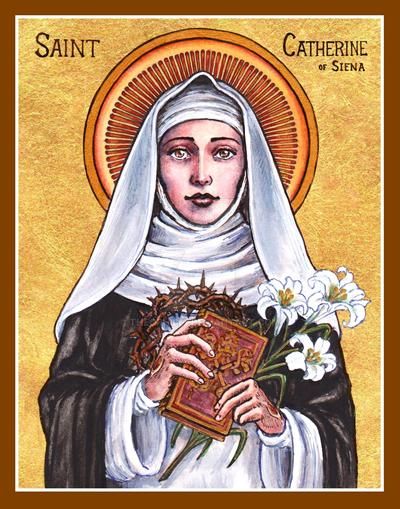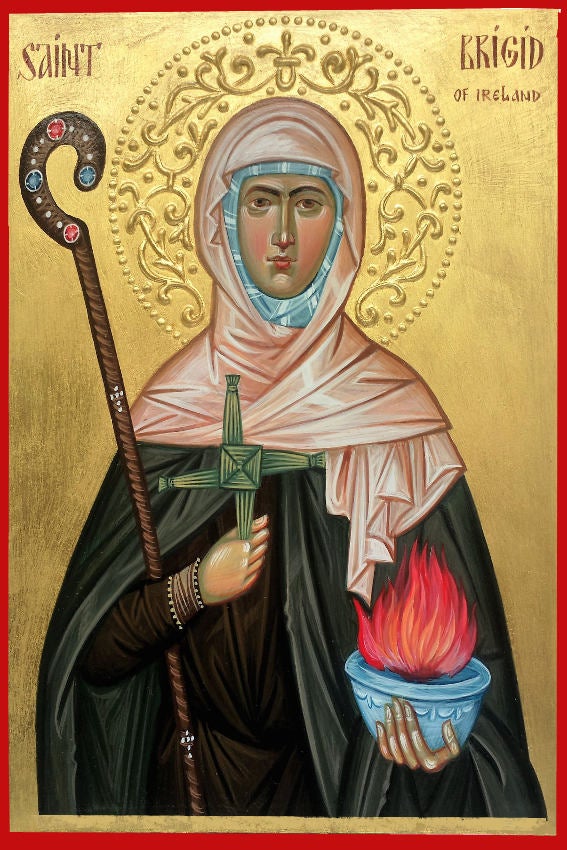Everything Comes From Love
“Everything comes from love. All is ordained for the salvation of [humankind]. God does nothing without this goal in mind.”
St. Catherine of Siena

A thousand years or so, and half the width of Europe, separate Catherine of Siena from Brigid of Kildare, but I’m thinking a lot about both these women during these quiet, anxious days of quarantine.
Catherine’s feast is later this week, on April 29. It marks the unorthodox life of this untutored fourteenth-century Dominican nun who was fearless and fierce, unbowed by the powers that tried to keep her in her place. She was a woman of implacable will who chastised popes, advised kings, and followed her own peculiar path.
So was Brigid, whose life I’ve been immersing myself in as I write a book on women in the early Irish church. These days, the two of them are striking me as a dynamic duo: Catherine was really, I think, Brigid’s spiritual daughter. Both knew that in a world drenched in the grace of God, where “all is ordained,” there are no accidents.
Case in point: Brigid’s ordination as bishop, described in a sixth-century story of her life:
The bishop, being intoxicated with the grace of God there, did not know what he was reciting from his book, for he consecrated Brigid with the orders of a bishop. ‘Only this virgin in the whole of Ireland will hold the episcopal ordination,’ said Bishop Mel.
In later, more misogynistic centuries, male church leaders would call Brigid’s ordination a mere accident, performed by a cleric “intoxicated with the grace of God” and too much wine. The bishop goofed, they said, when he mistakenly read from the wrong page in his prayer book.

But was it an accident? I think not. It wasn’t even that extraordinary, since history and art offer tantalizing hints that women were ordained as deaconesses, priests, and yes, even bishops throughout the early church. Brigid’s life shows her, time and again, clearly living out her episcopal orders—and passing her episcopal authority to her successor abbessess at her monastery at Kildare. To her contemporaries, she was an equal not only of Patrick, the apostle of Ireland, but of those first bishops—the apostles anointed by the Spirit in the upper room. “She was referred to as a bishop not out of courtesy or metaphorically,” writes Gary Macy in The Hidden History of Women’s Ordination. “She was really ordained . . . and there is no question that the ordination took. As Bishop Mel realized, Brigid, once consecrated, was a bishop. At least for this ninth-century Irish writer, a woman could be ordained and even be ordained as bishop.”
As Brigid of Kildare knew, and as Catherine of Siena learned a millennium later, and as women understand today: There are no accidents. There is simply the Holy Spirit leading the people of the God of love to serve in old and new ways. In these dark and uncertain days, women of creative energy, like Brigid, and women of implacable will, like Catherine, are offering me a glimmer of light and a glimpse of hope, and just a bit of courage to keep on keeping on. Like Brigid and Catherine, I’m not sure exactly what God has ordained, but I’m trying to trust that, whatever it seems like now, all comes from—and will lead to—love.

One Response
It is time to stop messing around with women deacons and recognize that a baptized woman is proper matter for ordination to all three levels of holy orders. For your consideration:
Humanity, Male and Female ~ Relational Complementarity in Consubstantial Unity
http://www.pelicanweb.org/solisustv16n04page24.html